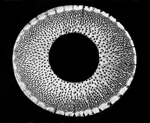|
Chronology
JAPAN 6 • 1664-1767
1664-1767 - The EARLY YEARS of the KOMUSŌ MENDICANT PSEUDO-MONK MOVEMENT
1661 or 1665 - UKIYO MONOGATARI by ASAI RYŌI
浮世物語 - "Tales from the Floating World"
浅井了意 - ASAI RYŌI - c. 1612-1691

Here you see a genuine, original picture of possibly two 1660s, very early komusō being featured in the short story collection 'Ukiyo monogatari',
"Tales of the Floating World", by Asai Ryōi.
This really rarely shown illustration was reprinted/reproduced in 1916 in a very comprehensive 12 volume collection of selected masterpieces of Japanese Tokugawa Period literature,
the 'Tokugawa bungei ruiju', Volume 2.
The short story with that particular unique picture attached does not at all mention any neither 'komo-sō', nor 'komu-sō',
so the two flute playing persons could only have been placed in the illustration to create some sort of an authentic 'cosy' atmosphere for the narrative.
As you can see - very contrary to several more recent really poor, misleading redrawn copies of the two figures - the flute being played in the front is both thin and quite long,
i.e. not at all a 'konjiku',
根竹
"root-end", type of 'shakuhachi'.
So, what do you honestly think those two flute players were actually playing when wandering around,
from gate to gate, begging their humbly best to hopefully survive?
I myself believe: Definitely not any 'honkyoku'!

I have copied this particular, quite questionable, illustration from a recent reprint
of the early Meiji Period publication titled Komusō zakki,
tosoundnosound-5.htm,
"Komusō Notebook" - most probably published in 1872 at the earliest
and no later than in the mid- to late 1870s.
Source: Okumura Yoshinori (compiler) & Kodera Gyokuchō (editor):
'Komusō zakki', "Komusō Note Book".
Photographic reprint of a c. mid-1870s original
published by the book store Mytown, Nagoya, in 2004.
Strangely and inexplicably so, one does actually not find that very picture in the online version of the
'Ukiyo monogatari' presented here, online, care of the
Waseda University Library.
Neither does that picture appear anywhere in this scanned version c/o
Kateibunko online source collection of Tōkyō University.

Dated picture of two komusō being presented very much similarly to the 'Ukiyo monogatari' picture in the 'Komusō zakki', mid-1870s, cf. the above.
Posted online by Bandō Tarō', 坂東太郎
Source URL:
Bandō Tarō's shakuhachi weblog
Bandō Tarō does not comment the picture that obviously has been printed
after some quite detailed illustration in Asai Ryōi's 'Ukiyo monogatari'.
1664: The shōgunate, or bakufu, orders every daimyō to establish in their domain an officer of religious investigation,
i.e. either a magistrate of religion (shūmon bugyō) or magistrate of temples and shrines (jisha bugyō).
1665: Registries of religious affiliation are now being produced on a nationwide scale.
The registry's format is finally standardized in 1671 - the system of religious inspection and obligatory temple certification
has now become completely consolidated by law and is carried out effectively, on a yearly basis, in all of Japan.
1664 - The First Known Account of some Active Kyōto Komusō
- Written by a Contemporary "Outside Observer and Witness"
こむ
僧
の
手 - KOMUSŌ no TE - "Music of the Komusō"
1664 - SHICHIKU SHOSHINSHŪ by NAKAMURA SŌSAN
糸竹初心集

The Komusō chapter in Shichiku Shoshinshū,
1773 edition (An'ei 2), Part 1, page 6
Waseda University Library, Tokyo
虚無僧尺八というは
長さ一尺八寸に切ゆえ尺八というとぞ、
濫觴はたしかに不知、
そのかみ由良の法燈此道の祖たるよしいへども
了簡せず、
昔よりぼろぼろの家に用る物と聞こえたり、
梵字、漢字、色おし、 しら梵字などいひしもの
此尺八の執行者と聞こえたり。
近き此不人というこむ僧有て、
「ごろ」という手お吹出し、その外「れんぼながし」、
「京れんぼ」、「さむ也井川」、「吉田」
などいうさまざまの手有之、
いづれも律呂の調子にあはせたる物とは聞こえず、
されども我道にあらざれば、其深き事をしらず。
"The komusō shakuhachi is named 'shakuhachi' because its length has been cut to the measure of 1 foot and 8 inches.
Its origin is certainly unknown.
Although it is being said that Hottō of Yura [Shinchi Kakushin] was the founder [of the komusō], that I do not ascertain.
One hears that, since ancient times, this thing [the shakuhachi] was used by the 'boroboro' practitioners, and also that the socalled 'bonji', 'kanji', iro-oshi', and
'shira-bonji' were people who performed this shakuhachi ceremoniously.
There are nowadays some outcasts [Jap.: fu-nin, "non-persons"] who are called 'komusō';
they are blowing a piece of music named 'Goro' - besides there are other tunes such as 'Renbo Nagashi', 'Miyako Renbo',
'Samunaru Ikawa', and 'Yoshida'.
One does not hear any of these pieces being played in the 'ritsu' [Dorian] or the 'ryō' [Mixolydian] musical modes.
As this, however, is not the tradition of my own, I do not know about this matter in depth."
Written and published by Nakamura Sōsan, 1664.
Trsl. by Torsten Olafsson, 2010.
Sources: Ueno, 1983, pp. 204 & 280, and
Shichiku Shoshinshū, 1773 edition,
Part 1, p. 6, owned by Waseda University, Tokyo.
This is, to the best of my knowledge, the oldest extant text
in which names of komusō music pieces are recorded.
An old copy of the Shichiku Shoshinshū is preserved
at Waseda University, Tokyo.
Follow this link to study a full photographic documentation
(PDF, 15,8 MB) of the book: Shichiku Shoshinshū.
Go to PDF page 5, right side, to study the komusō chapter.
Link to Shichiku Shoshinshū, bibliographical details.
Copyright restricted © by Waseda University, Tokyo.
1665: Registries of religious affiliation are now being produced on a nationwide scale.
訓蒙図彙 - KINMŌ ZŪ-I
"An Illustrated Dictionary", or: "Illustrated Vocabulary" - also see entry 1690
1666: The very first actual "encyclopedia" of Japan is created and published by the Neo-Confucian scholar Nakamura Tekisai who lived from 1629 to 1702.
Link to the National Diet Library's online version of the encyclopedia (go to page 2 on the NDL webpage), 1666-edition:
Kinmō zū-i, 1666
檀家制度 - DANKA SEIDO
THE DANKA SYSTEM of RELIGIOUS INSPECTION
1671: The registry's format is finally standardized. The system of religious inspection and obligatory temple certification has now become completely consolidated by law and is carried out effectively - and efficiently on a yearly basis, in all of Japan - with expectable exceptions, of course.
Read more on this local webpage: 1549 ... The Catholic Christian Century
and the Temple Patron Household System,
- and here:
Wikipedia: The Danka System
1672:
寺請証文 - TERA-UKE SHŌMON
"Temple Affiliation Certification Document"
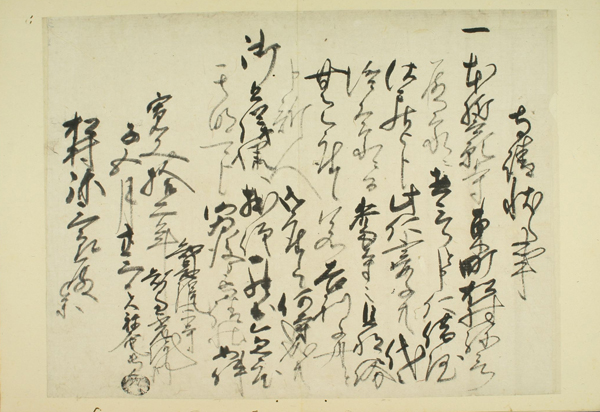
According to the descriptive info presented by the Waseda University Library, this 'tera-uke shōmon' is dated June 8th, 1672 (Kanbun 12, 5th month, 23rd day).
Being issued by the Jōdo (Pure Land) Sect temple Chieko-in,
智恵光院, in Central Kyōto, the document confirms that a certain
Matsumura Yasaburo,
智恵光院,
with his entire household is directly affiliated with that temple in the capacity as
'danka',
檀家, i.e. "patron family".
Through such a close relationship monks of the old, well established Buddhist temples were also obliged to inspect all of their respective "patron family households" on at least an annual basis and reveal any possible hiding Christians there.
Link:
Waseda University 'tera-uke'
往古之掟拾七ヶ條 /
先師拾七ヶ條掟 /
先師十七ヶ条
ŌKO NO JŌ JŪ-NANA-KE JŌ /
SENSHI JŪ-NANA-KE JŌ-JŌ /
SENSHI JŪ-NANA-KE JŌ
1677
Dated Enpō 5, 6th month = July, 1677
"17 Article Regulation of Ancient Times"
This very significant set of komusō regulations appears to have been issued by the Edo twin "temples" Ichigetsu-ji and Reihō-ji,
dated the 6th month of the year Enpō 5: July, 1677.


Source: Yamaguchi, 2005, pp. 169-170.
覚 - OBOE
覚
え
三
ヶ
条 - OBOE SANGE JŌ
延宝
の
御掟 - ENPŌ no GO-OKITE
延宝
の
御法度 - ENPŌ no GO-HATTO
Dated December 18, 1677?
No, no - not at all:
Actually dated 1678, January 11th - a Tuesday, according to the contemporary Western Gregorian Calendar!

覚 - Edited reprint of the socalled "Edict of the Enpō Period"
Matsudo City Museum, Chiba - the Komusō Room
Photo taken by Ronald Nelson in summer 2014.
This document is regarded as representing "fullproof" evidence of the socalled
"Fuke Sect" being officially recognized and authorized by the "Temple & Shrine Magistrate" in Edo towards the close of the 5th year of the Enpō Period
(1673-1681).
"Komusō Memorandum" - Enpō 5:
Is this really the "Official Recognition and Authorization of the Komusō Fraternity" - a socalled kōnin,
公認?
I myself find that extremely difficult to believe as neither the very term Fuke-sh�,
普化宗 - nor the shakuhachi, 尺八, for that matter - are mentioned in the text at all.
Not even the very central terms Rinzai Zen, 臨済禅, be it just Zen,
禅, appear in the text!
The document is dated "5th year of the Enpō Era, hinotomi, 12th month, 18th day":
延宝五丁巳年十二月十八日
There is one rather significant "problem" here, however:
That particular date is not valid at all. In fact, it never existed!
The cyclical calendar sign for the year Enpō 5 was tsuchinoe uma,
戊午
(the 55th of the sexagenary cycle), NOT hinotomi,
丁巳 (the 54th of the sexagenary cycle)
as given in the document.
In other words: The year in question: Enpō 5,
延宝五 does not correspond with the calendar sign!
In fact, the correct date would have been:
延宝五戊午年十二月十八日.
How could the official Magistrates of Temples and Shrines have made such a notable mistake?
Possibly, very simply, because they did not.
This document was most probably created - I mean: forged - by the komusō themselves, and not produced by the Tokugawa authorities at all!
You are most welcome to check the date right here on this website, yourself:
NengoCalc.
Well now, this is not all, believe me:
First, the shift of cyclical signs from hinotomi,
丁巳, to tsuchinoe uma,
戊午
happened on the 8th day in the 12th month of Enpō 5, which corresponds with the Western date "January 1, 1678"!
Secondly, not least - consequently: The 18th day in the 12th month of the 5th year in the Enpō Period did not "fall" in 1677 at all.
The actual date according to the Gregorian calender was: January 11th, 1678!
Supplementary comments regarding this most fascinating document:
This very important document is commonly referred to as Enpō gonen no hatto,
延寶五年の法度 [Kurihara, 1975, p. 155 & Nakatsuka, 1979, p. 208], "The 1677 Edict" [Sanford, 1977),
the "Ordinance of 1677" [Riley Kelly Lee, 1993], "das Edikt von 1677" [Gutzwiller, 1983], "The 1677 Memorandum" [Gunnar Jinmei Linder, 2012],
and "the Bakufu's first legal notification (Enpō year 5, 1677)",
(Bakufu no) - - - saisho no reitashi (Enpō go-nen, 1677),
(幕府の) - - - 最初の令達 (延宝五年、一六七七), Kamisangō, 1974, ch. 10, p. 17].
In this very context, Kamisangō (1974) also uses the term kō-nin,
公認,
which specifically translates as "official recognition", and "authorization".
覚
一 本寺之住職者其末寺并本寺弟子仲間以衆許
撰器量可相定縱附有由諸師其弟子を以相対
後住契約并遺状不可取立於末寺住職者其
所之弟子共相談之上任本寺可居置事.
一 弟子契約之儀改其人慥ニ証文を以取可極之肖
火法追放人等不抱置事.
附し虚無僧佐法古来之通相定本寺纏弥入念
急度可申付事.
一 末寺并弟子一宗之肖法人之仕置之時者小料之者ハ
類本寺江可任差図ニ大料之族者奉行所へ達落着
可申付為理不尽働仕間敷候.
右之條々堅可相守之若於違背ハ可為曲事者也.
延宝五丁巳年十二月十八日
大田摂津守○印
板倉石見守○印
小出山城守○印
虚無僧諸流
本寺中
末寺中
Being addressed to "All Factions of the Komusō", Komusō shoryū,
虚無僧諸流 (or Komusō shoha,
虚無僧諸派),
the text of this document is widely being recognized - and praised - as the actual "official government authorization" of the komusō fraternity's existence and activities.
In his PhD thesis (2012), Gunnar Jinmei Linder comments as follows (p. 112):
"Content of the 1677 Memorandum
The document is dated December 18 *) [see comment below], the fifth year of the Enpō era (1677), and addressed to
the various factions of komusō, at their main and branch temples.
The text consists of three items, which regulate the following aspects of the komusō temples:
Item (1) regulates the administration of the temples, stating that the main and branch temples should elect their
head monks in a democratic way, and that the administration should be fair.
Item (2) regulates the acceptance of students, stating that the main and branch temples should investigate new apprentices carefully before approving them,
and that the temples should avoid admitting criminals and suspicious people to their ranks.
Item (3) regulates the compliance with the laws that govern society, stating that the main and branch temples
should not punish the monks in their own way, but should adhere to the laws and regulations issued by the central authorities.
After the three items, a warning is added:
“The clauses [given] above should be obeyed firmly. In case of violation, this will be punished.”
"
*) In the traditional Japanese lunar calendar the "12th month" of the year was roughly equivalent with our Western month of January, not that of December.
This was so, too, in the 5th year of the Enpō Period in which the 1st day of the 12th month corresponded with the 25th day of December 1677 in the West.
Consequently, the 18th day of the Japanese 12th month "fell" in 1678, more precisely on January the 11th, 1678 - which was a Tuesday, btw.
Sources: Tsuchihashi, 1952, p. 100 & Bramsen, 1880, page (frame) 70:
"On Japanese Chronology and Calendars".
and the online nengo calculator "NengoCalc", c/o Universität
Tübingen, Deutschland, link: NengoCalc.
You may consult Zöllner, 2003, as well.
Primary sources: Kurihara, 1975, pp. 155-156,
Nakatsuka, 1979, pp. 208-209, Ueno, 2002, pp. 222-223
Lee, 1993, ch. 3.5.2, Yamaguchi, 2005, pp. 168-169
& Linder, 2012, pp. 111-113.
I have found the above version of the text on this web page:
The Ranzan City Society for the Study of Old Books. T.O.
In a very comprehensive collection of historical Japanese religious documents, published in 1921-1926,
in Vol. 16 the 'Enpō go-nen' ordinance is being referred to as
'Komusō kaku', 虚無僧覚, "Komusō Memorandum" (link, go to frames 70 and 71):
"Sources for the Investigation of Religious Institutions", Vol. 16, pp. 117-118, text no. 99. Published in 1926.
c. 1680-1681?: Acc. to Mikami Sanji writing a noteworthy double article on the Fuke-shū in 1902,
a commissioner of the national Temples & Shrine Magistrates Office Jisha-bugyō supposedly named Inaba Tango no Kami Masamori,
稲葉丹後守正盛,
should have made a note stating that the renowned Neo-Confucian scholar and governmental administrator Arai Hakuseki,
新井白石, 1657-1725,
should have expressed serious doubt regarding the authenticity of the so called Keichō no okitegaki,
慶長の掟書,
acc. to legendary tradition signed by the first shōgun Tokugawa Ieyasu himself in 1614.
It has, however, not been possible to neither identify nor verify the actual existence nor possible writings at all of this Inaba Tango no Kami Masamori. T.O.
References: See Linder, 2012, pp. 122-123, and WikiPedia:
Jisha-bugyō
Acc. to shakuhachi historian Yamato Hōmei, the Keichō no okitegaki was most probably fabricated as late as in 1751.
妙安寺 - MYŌAN-JI
雍州府志 - YŌSHŪFU-SHI
朗庵 - RŌAN
虚竹 - KYOCHIKU
1684/1686: YŌSHŪFU-SHI - Records of the Kyōto Area
雍州府志 巻四
寺院門上
妙安寺
在 蓮華王院 南 而為禪刹。
"Records of the Kyōto Area, Volume 4
Temples & Shrines, Part 1
"Myōan-ji is located south of the Rengeō-in,
蓮華王院, "Hall of the Lotus King" [the Sanjūsangen-dō], and it is a Zen temple."
Trsl. Torsten Olafsson, 2013.
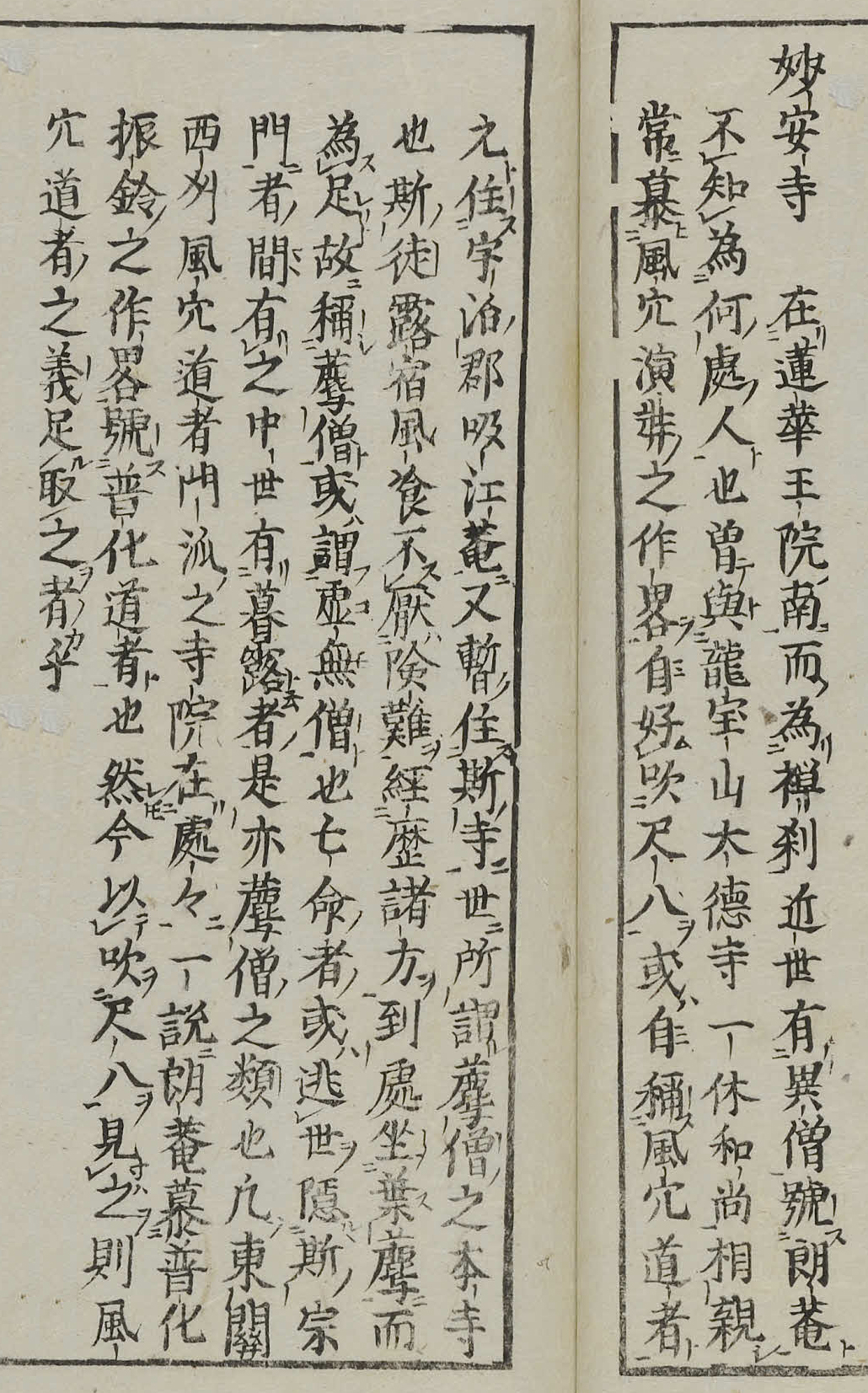
The descriptive text continues like this, in Max Deeg's translation (Deeg, 2007, p. 26):
It looks as if Max Deeg's translation may not include all of that original Japanese text?
"In the recent past there was a strange monk called Roan. Nobody knows where he comes from. At his time he was very close to master Ikkyū of the Daitoku-ji,
Ryūgoku-zan 龍寶山.
He had a predilection for the practice of the wind-holes (that is: flutes) and he loved to blow the shakuhachi.
He called himself ‘the ascetic wind-hole’ (fūketsu-dōsha 風穴道者).
Originally he lived in the district of Uji 宇治 in the (hermitage) Kyūkō-an
吸江菴.
He also lived in this temple (Myōan-ji) for a while.
As people say, this is the main temple of the komusō.”
Source:
Max Deeg: "Komuso and Shakuhachi-Zen. From Historical Legitimation
to the Spiritualisation of a Buddhist denomination in the Edo Period."
In: 'Japanese Religions', Vol. 32 (1 & 2): pp. 7-38, 2007.
"Komuso and Shakuhachi-Zen From Historical Legitimation
to Spiritualisation of a Buddhist Denomination
in the Edo Period." PDF file
Although the temple names are written differently, this may be regarded as the earliest known written reference
to the Kyōto Myōan Temple in South Eastern Kyōto (Higashiyama Area)
although the name is written with different characters.
The famous Sanjūsangen-dō, 三十三間堂, with its 1001 golden Kannon statues is situated
just south of the present Shichi-jō Avenue in the Higashiyama area.
However, there is general consensus that not long afterwards and until 1871 the Kyoreizan Myōan-ji was rather located a short distance to the North,
in the close neighbourhood of the famous Edo Period Dai-butsu, 大仏, "Great Buddha",
of the Tendai temple Hōkō-ji, 方広寺, right north of the Toyokuni Shrine.
Other close neighbours in this area are the present-day Kyōto National Museum to the South and the Myōhō-in to the East.
10 volumes by Kurokawa Dōyū, died 1691.
Source: Yamaguchi, 2005, p. 82.
Links to complete scans of the 10 volume work:
Tokyo University Library:
https://kokusho.nijl.ac.jp/biblio/100303748/2?ln=ja
Art Research Center, Classical Literature Database:
https://www.dh-jac.net/db1/books/results.php?f3=%E9%9B%8D%E5%B7%9E%E5%BA%9C%E5%BF%97&enter=portal#
POSTSCRIPT - How such fabricated "shakuhachi history" becomes "official shakuhachi history" in the West, an example:
"In the early Edo period, a picture of a komosō named Roan was published (fig. 5) in connection with a written history of the komusō.
Roan was cited as the komusō prototype, perhaps making the connection to Zen Buddhism because of his friendship with his contemporary, the priest Ikkyu.
Roan, later called Kyochiku, was named as the traditional founder of the first Fuke-shū temple serving the komusō monks, Myoan-ji, in Kyoto.
To this day there is a wooden statue representing Kyochiku as founding abbott on the central altar at Myoan-ji."


Left, Fig. 5: Allegedly early 1600s Rōan picture
Right: Kyochiku sculpture at Kyōto Myōan-ji, anonymous photographer
Source left, The International Shakuhachi Society website:
https://www.komuso.com/top/komuso_history.pl?lang=6
Read more about Rōan and Kyochiku Zenji here:
1735: Kyōto Myōan-ji Temple Chief Administrator
Kandō Ichiyū's Letter about 'Sankyorei-fu',
the "Three Non-Dual Spirit Music Notations"
1685
大怒佐 / 大ぬさ / 大幣 - ŌNUSA
"Streamers" - author/creator unknown
三味線初心書 - Shamisen shoshin-sho


Two 'komusō' playing thin vertical flutes in front of a gate.
Printed in the shamisen beginners' book 'Ōnusa' in Kyōto, 1685.
Source: Kyōto Institute Library and Archives Search.
Link/URL - PDF frame 29: http://www.archives.kyoto.jp/websearchpe/detail/1779255/1/29
1687 - Jōkyō 4, 6th month
鈴法寺掟 - REIHŌ-JI no OKITE
"Reihō-ji Ordinance"
普化宗 - FUKE-SHŪ ???
This is the oldest known surviving komusō document in which the appellation
Fuke-shū,
普化宗, appears in - though still quite questionable - print!
It is, however, only at the very end of the document that the text concludes as follows;
普化禅宗惣本寺 鈴法寺 - FUKE ZEN-SHŪ SŌ-HONJI REIHŌ-JI
"Reihō-ji, Mother Temple of the Entire Fuke Zen Sect".
That, however, may quite possibly be a manipulated version of some original document text ...
Source: Nakatsuka, 1979, p. 396.
托鉢修行 - TAKUHATSU SHUGYŌ - Ascetic Begging Practice
根竹尺八 - KONJIKU SHAKUHACHI - Root-end Shakuhachi
人倫訓蒙図彙
1690 - JINRIN KINMŌ ZU-I
"An Illustrated Dictionary of Human Matters", or: "An Illustrated Vocabulary of Human Relations"

Two 'komusō' playing root-end shakuhachi
In: 'Jinrin kinmō zu-i', 1690 - Maki/Vol. 2
By Makieshi Genzaburō
The Library of Kyōto University
Link to Kyōto University's online presentation of this volume

In: Ueno, 2002, p. 219
This is the so far possibly oldest known surviving picture showing 'komusō'
performing 'taku-hatsu',
托鉢,
or: 'being entrusted with a bowl'
(practicing ascetic religious mendicancy) at the gate of a house.
Their flutes are certainly of the heavy 'kon-jiku',
根竹, or "root-end" type.


Do note that the figure to the left is clad in the traditional dress of a Buddhist monk whereas the figure on the right is wearing
the - apparently representive - outfit of the early 'komusō'.
The text accompanying. and sort of "explaining", the picture in Volume 2 of this encyclopedia is to be located but a few pages after the picture page itself - in frame 48 of the online edition:

Close to the upper right corner of the page to the right you see this text section with the heading 'Shakuhachi':


Here the original wording presented as online digitized Japanese 'kanji' ideographs:
尺八
其長一尺八寸のゆえに尺八と号す。
楊貴妃の哀音を表すとかや。
玄宗帝の作なり。
唐土の僧普化和尚、これを愛せらる。
今、虚毛僧は此末流なり。
In English:
"Because its length is 1 foot 8 inches, it is called shakuhachi.
Maybe it expresses the sad voice of the Willow Princess ... ?
It originates in an occult, noble sect.
The Chinese T'ang Dynasty monk Fuke liked it [a lot].
Today, the Kyomōsō are the descendants [of his]."
Trsl. by Torsten Olafsson, 2018.
1694:
本則弟子江申渡定
HONSOKU DESHI E MŌSHI-WATASHI SADAME
"Announcement of Regulations for Disciples of the First Seal"
明暗寺 - MYŌAN-JI
This is the oldest known relatively historically reliable document originating with the Myōan Temple in Kyōto!
Here, for the very first time, also, we meet the term 'honkyoku', 本曲, "original", "basic",
or "true" piece of music - in print!
Source: Nakatsuka, 1979, pp. 166-169.
For short resumés of the document's contents, see Linder, 2012,
pp. 125-126 & Lee, 1993, ch. 3.6.
俳句 - HAIKU
LATE 17th CENTURY

Bashō: Bamboos and a haiku - late 17th century
古池や
蛙飛び込む
水の音
ふるいけや
かわずとびむ
みずのおと
'Furu ike ya
kawazu tobikomu
mizu no oto'
"Olden pond ...
frog jumps in ...
sound of water ... "
Or, in the proper 5-7-5 syllable version:
"There, an olden pond -
Leaping frog drops into it -
Ahh, sound of water ... "
Matsuo Bashō, 1644-1694. Trsl. by Torsten Olafsson.
1695

A shakuhachi player wearing a pointed 'ami-gasa' straw hat
In: 'Kashiragaki zōho kinmō zu-i'
('Enlarged Elementary Encyclopedia with Illustrations'), 1695
A first edition, 'Kinmō zu-i', was published in 1666.
A third edition, 'Kashiragaki kinmō zu-i taisei', appeared in 1789.
Here, to the right of the flute player, the kanji for 'komosō', 'mat monk',
are given. In the text block above, 'komosō' is explained
with the archaic terms of 'bo(n)ron', 'bo(n)ronji', 'kanji', and 'boro'.
The text concludes that a 'komosō' is using the shakuhachi for 'shugyō",
修行,
"ascetic practice" - which is, certainly, not only limited to Zen Buddhist traditions.
Shimane University Library Digital Archive #1316
Direct link: Volume 4-7, go to frame 8
The text describing the komosō picture appears to read as follows:
薦僧
薦僧は梵論ともいう、梵論字、漢字ともいう。
又暮露とも書く。尺八をふき、諸国を修行す。
"The "mat monk(s)" is/are also called both 'boron', 'boronji', and 'kanji'.
Besides, one also writes 'boro'. Blowing the shakuhachi,
they perform ascetic practices [shugyō] all over the country.
"
Trsl. by Torsten Olafsson, 2013
An updated and enlarged edition of this encyclopedia
was published in 1789.
About 1700:
三節切 初心書
'MIYOGIRI SHOSHIN-SHO' - "A Beginner's Book for the Triple-noded Flute"

Source:
Kishi Kiyokazu, July 4, 2016: Miyogiri shoshin-sho
年山紀文 - NENZAN KIBUN
1702
尺八
- - -
此ごろ我國にては、こも僧というもの、これを吹て、
活計のなかだちとして、上つがたの人は、
いやしき物のやうに、おぼしめされたり。
或人の曰、こも僧の尺八は洞簫とは形ちもかはれりとぞ。
- - -
"SHAKUHACHI
- - -
In Japan [lit.: "my country'] the socalled komosō are blowing it;
being their means of survival, upper class people consider them to be mean people.
Some people say that the shakuhachi of the komosō is certainly different from the dōshō [the Chinese dòng-xiāo].
- - - "
Nenzan kibun vol. 2 by Andō Tameakira,
安藤為草.
Source: Koji Ruien Vol. 35, p. 1002.
Trsl. by T.O., 2015.
本寺証文 - HONJI SHŌMON
1702 & 1705
"Parent Temple Confirmation" (from Kōkoku-ji to Kyōto Myōan-ji)
本寺証文
一 京都大仏明暗寺当山之為末寺事著明也。
為後証仍如件。
宝永二酉年臘月三日
興国寺現住月江
印判
明暗寺
"Parent Temple Confirmation.
This is a clarification [or, confirmation] that the Kyōto Daibutsu Myōan Temple is [now] a branch [or, sub] temple of this temple.
In order for the future the certificate is therefore thus [written].
The 2nd year of Hōei, Year of the Bird [1705], the 12th lunar month, 3rd day.
Gakkō - chief administrator of the Kōkoku Temple.
[Seal]
To the Myōan Temple.
"
In 1703 the chief administrator of the Kyōto Myōan Temple, named Gyokudō,
玉道,
wrote a letter of petition, dated the 27th day of the 9th month in that year,
to the then abbot, named Bairyū,
梅龍,
of the Kōkoku Temple in Yura, present Wakayama Prefecture.
Gyokudō argued for the Myōan-ji to be accepted as a sub temple of the Kōkoku-ji,
but more than two years should pass before the Kōkoku Temple finally confirmed the new "mother-child" temple relationship.
Source: Nakatsuka, 1979, pp. 254-260.
Trsl. by T.O., 2012.
1711: WANTED: Believers in the Christian Faith - Report and Earn a Reward !!!
キリシタン
禁制
の
高札 - KIRISHITAN KINSEI no KŌSATSU
"Public Proclamation About the Prohibited Christian Faith"
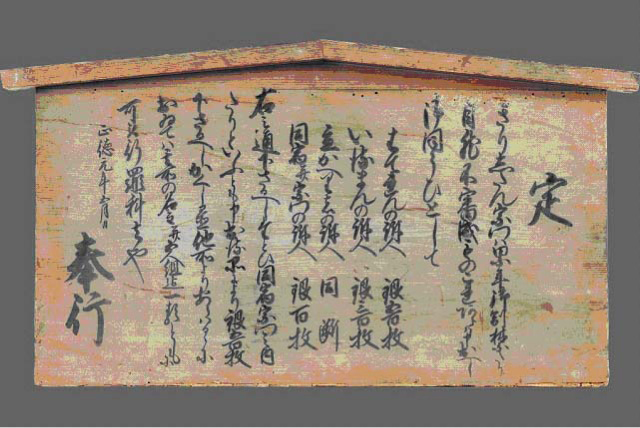
Reward proclamation, public sign board
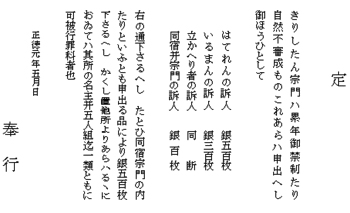
Reward proclamation, wording
1:
ばてれんの訴人 (伴天連之訴人) 銀五百枚
2:
いるまんの訴人 (入満の訴人) 銀三百枚
3:
立かえり者の訴人 同断
4:
同宿弁宗門訴人 銀百枚
Japanese text about the promised rewards:
1: "A person who reports a Catholic Father (shall earn) 500 pieces of silver."
2: "A person who reports a non-ordained Christian monk (shall earn) 200 pieces of silver."
3: "A person who reports a second time/returning lay convert (shall earn) the same (amount)."
4: "A person who reports some one who speaks about the creed in the same place
= a lay believer (shall earn) 100 pieces of silver."
Trsl. by Torsten Olafsson, 2018.
Links:
切支丹禁令
and
踏み絵
鈴法寺覚 - REIHŌ-JI OBOE
"Reihō-ji Memorandum"
普化宗 - FUKE-SHŪ
1722 - Kyōhō 7, 6th month
This is yet another important surviving document issued by the Reihō-ji in Edo in 1722.
Source: Nakatuska, 1979, pp. 400-401.
Short quotation in Koji Ruien 9, p.1114.
花街風俗図絵巻
Early 18th CENTURY


A pair of komusō depicted in the 'Hanamachi fūzoku-zu emaki',
"Picture scroll of Manners and Customs on the Flower Avenue",
i.e. in the pleasure quarters - early 18th century
Artist unknown. The Tobacco and Salt Museum, Shibuya-ku, Tōkyō
大津絵 - ŌTSU-E
女虚無僧 - ONNA KOMUSŌ
Appearing from the Early 18th Century

Undated Ōtsu-e style folk art painting of a female komusō.
This popular motif may have been inspired by 'komusō' figures
like those in the 'Hanamachi fūzoku-zu emaki' scroll above.
Artist unknown. Waseda University Library, Tōkyō.
Read more about Ōtsu-e here: www.ootsue.com: What is Ōtsu-e?
虚竹 - KYOCHIKU

Kyochiku Ryōen Zenji - legendary founder
of the temple Kyoreizan Myōan-ji in SE Kyōto
Statue in the main hall of Myōan-ji
Origin, artist and date unknown. In: Tomimori, 1979
1735 - KYOREI-ZAN ENGI NARABI ni SANKYOREI-FU BEN
虚霊山縁起並ぴに三虚霊譜瓣 - Kyorei-zan engi narabi ni sankyorei-fu ben
"Origin of the Myōan-ji and Tradition of the Three Honorable Music Pieces
Date: Kyōhō 20, 9th month - October, 1735
無生真 - MU-SHŌ-SHIN
Among the many old Fuke Shakuhachi textual sources preserved at the Myōan-ji in Kyōto, one especially fascinating document is titled
Kyorei-zan engi narabi ni sankyorei-fu ben,
虚霊山縁起並ニ三虚霊譜辯,
"Towards an Understanding of the Origin of the 'Empty Spirit' Mountain [i.e. the Kyōto Myōan-ji] and a Discourse about the Three Empty Spirit Music Pieces [i.e. Mukaiji, Kyorei & Kokū]".
Dated 1735 (Kyōhō 20, 9th month) this hand-scroll bears the signature of Kandō Ichiyū, 寛堂一宥,
18th abbot in the traditional Myōan-ji lineage, who died in 1738, Genbun 3, 2nd month, 23rd day (Nakatsuka Chikuzen, 1979, pp. 133 & 150).
- - -
Par. 2:
興国開山法灯国師入宋帰国之日、
宋地、国作、宋恕、理正、法普
之四居士随待来干我邦、
皆是風顛漢、而以普化為祖、以尺八為法器、
幽柄鷲峰 谷、尋常弄尺八為遊戯三味、
共旧跡干今号普化谷。
"The founder of the Kōkoku (Temple), Hottō Kokushi, travelled to Sung (China), and on the day of his return (to Japan),
four Buddhist laymen of Chinese descent, Kokusaku, Sōjo, Risei and Hōfu, accompanied him to our country.
They were all highly cultured Chinese and with Fuke as their role model [lit. ancestor] and the shakuhachi as implement of the Buddhist Law [hōki],
confining [or, secluding] themselves in the valley beneath the Eagle Peak [the mountain where Kōkoku-ji is located],
they used to take pleasure in playing the shakuhachi as a way of practicing meditation [sammai].
Today, the site of their old common dwelling place [kyūseki] is called 'The Valley of Fuke'."
Par. 4:
虚竹有投機偈伝、
一従載断両頭後、
尺八寸中通古今、
吹起無生真一曲、
三千里外絶知音、
"Kyochiku had [or, favoured] a speculative Buddhist verse
which says,
'When one has cut off Dualism,
the essence of the shakuhassun
transcends Past and Present.
That one sound blowing forth
of the True Reality of the Non-born
exceeds the deepest of friendships,
beyond limit.'"
Par. 5:
嘗虚竹在城州宇治、号朗菴主、
命終樹塔於宇治郡五筒庄中、
人呼為普化塚也。
"Once Kyochiku stayed in Uji in Jōshū [mod. Kyōto Prefecture] he called himself 'Rōan the Hermit'.
By the end of his life he erected a five-levelled monument
[a 'gorintō' grave pagoda?] in the vicinity of Uji.
People call it 'The Grave of Fuke'."
Par. 6:
至於第二世明普、居干洛東、
建立虚霊山明暗寺、
於今普化一流相承来也、
"As for Kyochiku's successor Myōfu, when he lived in the East of the capital [Kyōto Higashiyama],
he established [lit.: build] the Empty Spirit Mountain Myōan Temple,
and so the School [Jap.: ichi-ryū] of Fuke has been preserved till today."
- - -
The full text is reprinted in Nakatsuka, 1979, pp. 133-135.
Digitized by Iida Kyōrei c/o
Koshūan website
Trsl. by Torsten Olafsson, 2010, 2013.
五輪塔 - GORINTŌ



Gorintō - The Shingon Buddhist five element pagoda
- is a very common type of grave monument in Japan.
The five "rings" represent the Five Buddhist Elements of the Universe:
Earth, Water, Fire, Wind and Space.
The gorintō is believed to possess strong magical powers.
一月寺虚無僧本則 - ICHIGETSU-JI KOMUSŌ HONSOKU
1740

Ichigetsu-ji komusō honsoku dated 1740
Matsudo City Museum, Chiba
Source / Link: Yatō Osamu's website
梵字 - BONJI
Mid-18th century?

"HĀM"
representing Fudō Myōō, the 'Immovable Wisdom King'
of Tantric Buddhism, Shingon in Japan. Sanskrit Siddham calligraphy
(Jap.: 'bonji') by Zen master Hakuin Ekaku. Early 18th century
"At twenty-four he was at Eigenji in Takada, Echigo. His training had advanced to the spirituality of Oneness - the identity of subject and object.
One day in January, as he was sitting as usual throughout the night in Zazen samadhi, the bronze temple bell sounded to announce dawn.
At this moment, all of a sudden, he had his awakening. It is recorded that he jumped up with joy."
Shibayama Zenkei, 1975, reporting on the realization
of Hakuin Ekaku, 1685-1768.
悟
り - SATORI
無孔笛 - MUKUTEKI
Mid-18th century? - TŌREI and the FLUTE WITHOUT HOLES:

Circle - calligraphy by Tōrei Enji, 1721-1792
" - - - I received a small statue of Bodhidharma on the fifth day of the fifth month of 1746.
While I was absorbed in seated meditation after having made prostrations [in front of the statue],
I suddenly entered the ineffable melody of the flute without holes [mukuteki no myōchō}. - - - "
Quotation from Tōrei Enji's commentary on the Ta-mo-to-lo
ch'an ching entitled 'Darumatara zenkyō settsu kōsho',
first publ. in 1784. Trsl. by Michel Mohr, 2006, p. 228.
Tōrei was the Dharma successor and biographer of Hakuin Ekaku.
鶴
の
巣籠
- TSURU no SUGOMORI
仮名手本忠臣蔵 - KANADEHON CHŪSHINGURA
1748
The famous classical shakuhachi melody Tsuru no Sugomori,
鶴
の
巣籠, "Cranes Resting in their Nest", is referred to in Japanese literature for the very first time, in the significant Bunraku and Kabuki versions of the
play Kanadehon Chūshingura, "The Treasury of Loyal Retainers".
The story was originally authored in 1706 by Chikamatsu Monzaemon, 1653-1725,
for the 'Bunraku' puppet theatre.
Appearing in Act 9 of the 1748 play, the specific quotation reads as follows,
- - -
「... ちょうど表には尺八を吹く虚無僧が来て、
「鶴の巣籠り」の曲を奏でている。」
- - -
" ... right in front of the house a 'komusō' comes up while blowing the shakuhachi, and he is performing the melody "Cranes Resting in their Nest"."
Read more about the famous 'Chūshingura' play here, f.i.:
Wikipedia about Kanadehon Chūshingura, in English
&
Wikipedia about Kanadehon Chūshingura, in Japanese
1749

The actor Matsumoto Koshirō II in the role as
Kakogawa Honzō in the Kabuki play 'Kanadehon Chūshingura".
Woodblock print by Torii Kiyoshige (c. 1724-1764)
Dated 1751 by shakuhachi historian Yamato Hōmei acc. to whom the first version of the document was fabricated.
Link to the relevant webpage of Mr. Yamato's
慶長之掟書 - KEICHŌ no OKITEGAKI/JŌSHO
Original date acc. to the many versions of that "document": 1614 - "The Keichō (Period) Edict"
御入国 之節 被仰渡 候 御掟書
(ごにゅうこく のせつ おおせ わたされ そうろう おんおきてがき)
GO-NYŪKOKU no SETSU ŌSE WATASARE SŌRŌ ON-OKITEGAKI
“Decree About Bestowing Entrance to the Different Provinces”
Do note: Acc. to Max Deeg the oldest "attested" version of a 'Keichō no okitegaki' is dated as late as 1792! Deeg, 2007, p. 27.

10 paragraph version of the 'Keichō no okitegaki'
Kokuritsu Kōbun Shokan/National Archives of Japan:
Naikaku Bunko Library/Cabinet Library, Japan
In Ueno, 2002, p. 209
浪人虚無憎 - RŌNIN KOMUSŌ
刀 - KATANA
(1) "The komusō fraternity is a religious group specifically designed to serve the needs of rōnin and samurai
who wish to withdraw temporarily from the world.
The temples of the komusō do not pertain to the jurisdiction of the authorities in which they are located. Furthermore,
they are reserved only for the samurai."
(3) "If a komusō chances upon a suspicious individual, he has the right to arrest him and deliver him to the local authorities."
(8) "When a samurai enters the temple's grounds carrying a sword dripping with blood
[切血刃], he should first be interrogated by the temple's authorities, prior to be given refuge."
Selected clauses from the earliest version of the 'Keichō
no jōsho'. Trsl. by Takahashi Tone, 1990, pp. 55 &56.
To study the Jap. text of two different versions of the
'Keichō no jōsho', you may visit these pages:
Wikipedia, Japan,
& Iida Kyorei's shakuhachi webpages
For complete translations and thorough studies of 6
surviving versions of the 'Keichō jōsho', do consult
Takahashi Tone's remarkable thesis on the subject (see the bibliography
below). Although dated 1614 (Keichō 19), the document is a later
fabrication, possibly first produced around 1751, acc. to Yamato Hōmei.
See Riley Kelly Lee's thesis, chapter 3.5.2, for a
full translation of a 21-article version of the okitegaki.
托鉢 - TAKUHATSU
懷劔 - KAIKEN
懐剣 - FUTOKORO-GATANA
RELIGIOUS MENDICANCY & THE SHORT DAGGER
In some later, more comprehensive versions of the Keichō no okitegaki, this particular clause is included:
"A komusō should not carry arms during his takuhatsu [religious mendicancy].
He is only allowed to have a dagger shorter than one shaku [1 Jap. foot = 30.5 cm] and hide it in his clothing."
Sources: Takahashi, 1990, p. 58; Kurihara, 1975, p. 137.
天蓋 - TENGAI
1752-1755

The kabuki actors Nakamura Kumetarō I, Onoe Kikugorō I
and Sanogawa Ichimatsu I each carrying a 'tengai'.
Woodblock print by Torii Kiyoshige (c. 1724-1764, active 1735-1754)
天蓋 - TENGAI
1758

Komusō in a street, wearing a rather "deep" 'tengai'
In: "Ehon mitsu wagusa', volume 2, 1758
by Nishikawa Sukenobu (1671-1750)
National Diet Library, Tōkyō
京都明暗寺
1767? - THE KYŌTO MYŌAN-JI RISES to STATUS of 'RINZAI ZEN TEMPLE'
According to James H. Sanford, 1977, pp. 431-432 (basing himself on the writings of Koide Kōhei, 1970, Imaeda Aishin, 1962, and Nishiyama Matsunosuke, 1956):
" - - - Originally Myōanji was a sub-temple of Reihōji, but in 1767
it managed to have itself redesignated as a branch temple of Kōkokuji. In
this way the Kyōto temple was able to connect itself directly to the lineage of the
alleged first Japanese proponent of the Fuke sect, Hattō Kokushi, who was also
the founder of Kōkokuji - although by the 1700s Kōkokuji had itself become a
branch temple of the Myōshinji line of Rinzai Zen. - - - "
A comment:
The redesignation did in fact take place much earlier, namely in 1705 - judging from documents and information presented by Nakatsuka Chikuzen (1979, p. 256)
and Yamaguchi Masayoshi (2005, pp. 144-145).
天蓋 - TENGAI
A popular woodblock print theme around the early 1770s:
The face of a komusō reflected in a mirror
c. 1770

By Isoda Koryūsai (1735-1790; active 1764-1788)
c. 1770

By Isoda Koryūsai (1735-1790; active 1764-1788)
1769-1770

By Suzuki Harunobu (c. 1725-1770)
c. 1770

By Isoda Koryūsai (1735-1790; active 1764-1788)
|
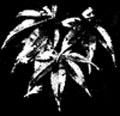
Momiji
|
